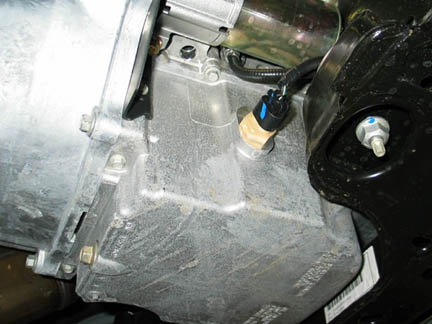I installed a Kat's 150 watt stick on heater tonight on my Cadillac CTS-V. Would you guys like to guess how many degrees F my cold oil temp will increase as a result? I'll take three measurements; before and after 1 hour, 2 hours, and then I'll leave it on until it maxes out temp.
Here is the oil temp sensor location, pan has 7 quarts of oil in it. The pad heater covers about 40-50% of the surface area of the sump bottom.

I will wager my own guess, assuming cold oil around 10 degrees.
1 hour: +30 degrees
2 hour: +51 degrees
max: +70 degrees
I've always been a fan of devices that help pre-heat your engine. I have messed around with stick on heaters in the past but this is the first time I've owned a car with a digital oil temperature sensor. We've had a very warm winter until recently. Recently my Cadillac had it's first cold start with M1 0W40 in pan and with the oil temp at -7 F my low oil pressure light came on after start up and stayed on for several seconds. I've never seen that happen with any of the various 5w30's I've ran, even when the car sat for a week in New Hampshire and was started at -15 last winter on fresh 5w30 PP. Different oil filter at the time, was running AC Delco and currently have a Tearolater Pure One on there.
Here is the oil temp sensor location, pan has 7 quarts of oil in it. The pad heater covers about 40-50% of the surface area of the sump bottom.

I will wager my own guess, assuming cold oil around 10 degrees.
1 hour: +30 degrees
2 hour: +51 degrees
max: +70 degrees
I've always been a fan of devices that help pre-heat your engine. I have messed around with stick on heaters in the past but this is the first time I've owned a car with a digital oil temperature sensor. We've had a very warm winter until recently. Recently my Cadillac had it's first cold start with M1 0W40 in pan and with the oil temp at -7 F my low oil pressure light came on after start up and stayed on for several seconds. I've never seen that happen with any of the various 5w30's I've ran, even when the car sat for a week in New Hampshire and was started at -15 last winter on fresh 5w30 PP. Different oil filter at the time, was running AC Delco and currently have a Tearolater Pure One on there.


